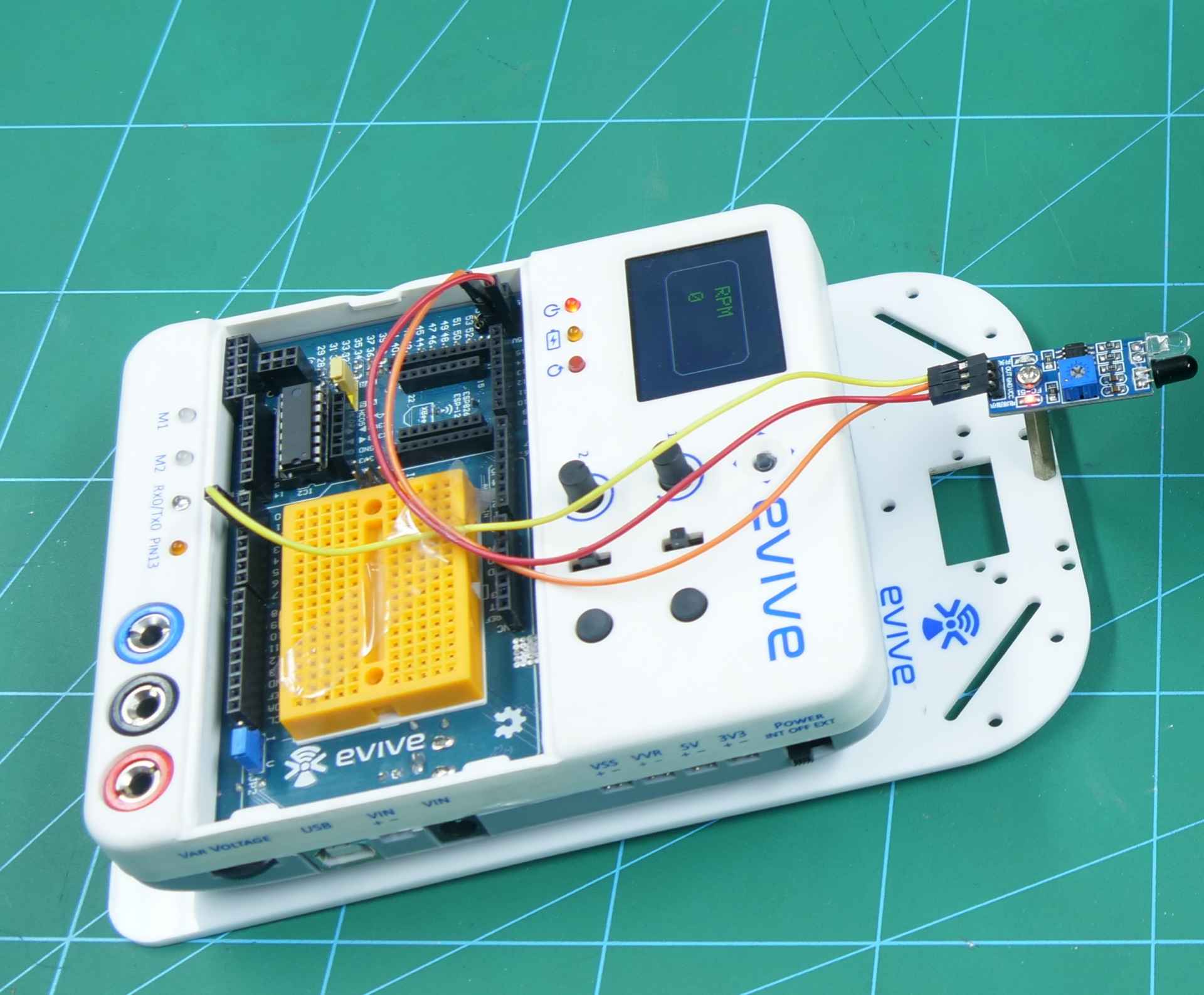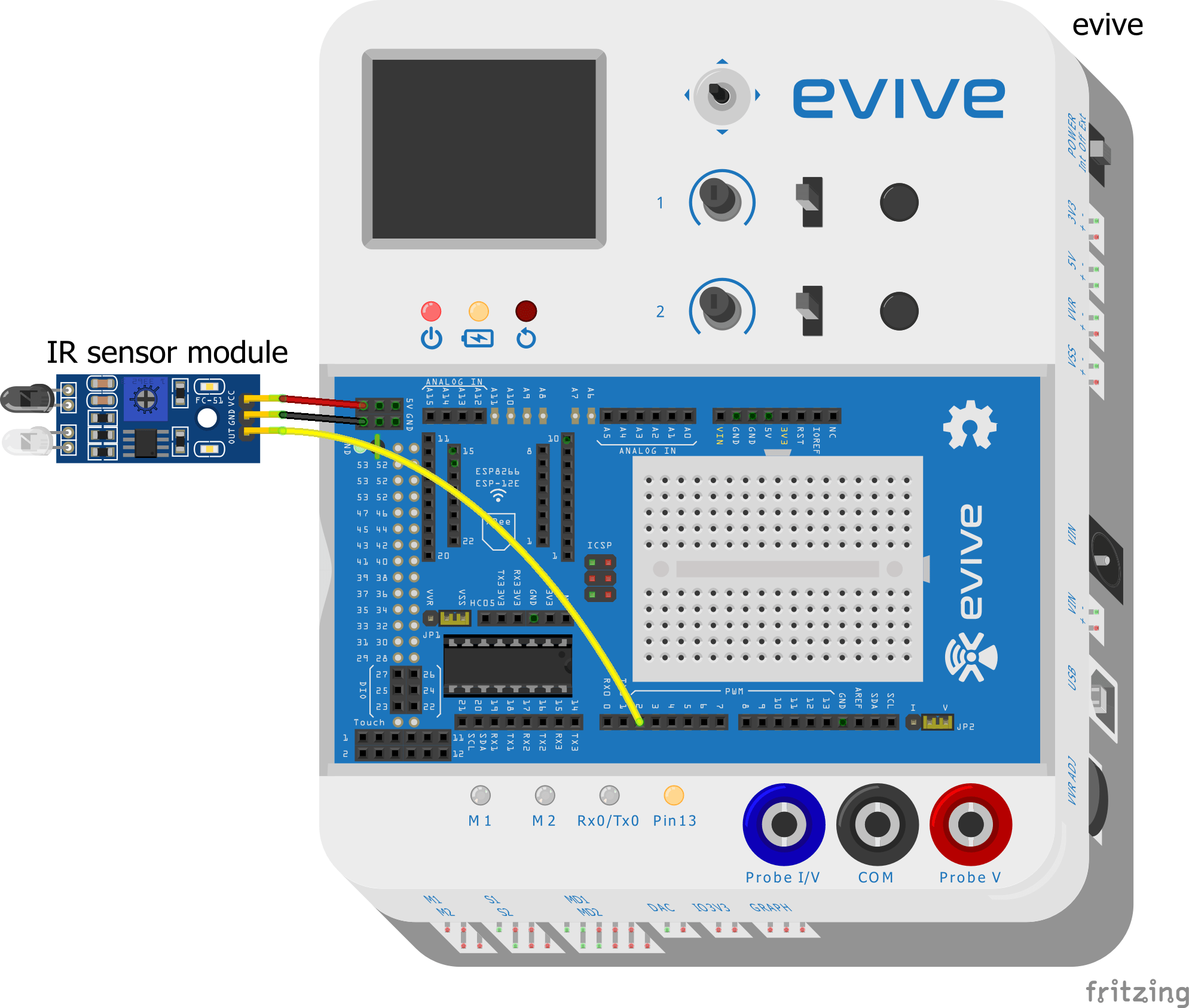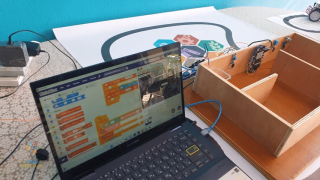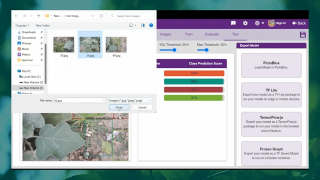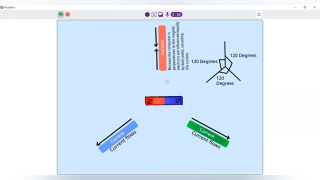Introduction
A tachometer is a handy instrument for engineers and enthusiastic hobbyists alike who like to work with motors now and then. It is a device that measures the speed of rotating objects such as motors or crankshaft of engines. It measures speed in terms of revolutions made by the objects in a minute, i.e. RPM. In this project, we’re going to make a simple and cost-effective digital tachometer with the help of evive, an IR sensor, some jumper wires, and some enjoyable DIYing!
Ready to set a ‘revolution’ in motion? Let’s begin then!
Making
Here we are going to use evive and IR Sensor. You can use any other Arduino board as well.
To make the tachometer easy to handle, you can mount the IR sensor and evive on a chassis. (Optional)
- Take the chassis and mount evive on it using M3 bolts and nuts.
- Mount IR Sensor in the front of the chassis using M3 bolts and nuts.
The assembly is now complete. All you need to do now is make the connections.
To test the code, you will need a rotating object. Take a DC fan and connect it to evive. Now, measure the RPM of this fan. If it shows a value on the TFT screen, it means that the code is correct. You can now measure the RPM of any rotating object, be it your ceiling fan, the tires of your bike or car or a turntable.
In this project, we will be measuring the RPM of the gearbox. On changing the gears, the RPM changes.
Connections
Connect the IR Sensor with evive as shown below:
Logic
When the shaft rotates, it takes time to come back to the point where it started. The IR sensor measures how much time it takes to complete one revolution. How? By detecting the white strip on the wheel. When the shaft starts rotating, the strip passes by the IR Sensor once every rotation. The number of times the strip passes by the sensor will be the speed. To get the speed in terms of revolutions per second, multiply this value by 60. And finally, display the value on the TFT Screen.
Arduino Code
Upload the following Arduino Code to evive:
Application
The Tachometer can also be used to calculate the gear ratio of a complex gearbox. There are multiple gears into the gearbox. If we know the RPM of one gear, we can find the RPM of the other gear. RPM is nothing but the rotational speed of the wheel. You can calculate the speed of the other gear with the help of the equation given below:
S1 * T1 = S2 * T2
Where,
S1 is the speed of the driver gear and T1 is the number of teeth on that gear.
S2 and T2 are the speed and tooth count of the driven gear.
Hence, Gear Ratio = T1/T2 = S2/S1.
In our case, S1 = 164 for gear with less number of teeth.
S2 = 540 for the gear with more number of teeth.
Hence, Gear Raito = 540/164 = 3.19 (Around 3).
Conclusion
With this, your DIY digital tachometer is ready to measure every revolution that was brought about by the fleet of motors!
Owing to its tremendous success and love and support showered by DIY enthusiasts like you, we’ve decided to EXTEND our Indiegogo campaign! Yes, you read that right! If you missed the opportunity before, you can grab it with open arms NOW and check out all the cool stuff that we’re offering! Go have a look HERE.



